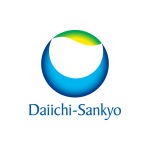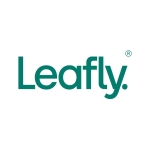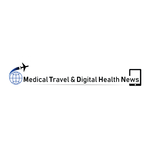- First HER2 low metastatic breast cancer phase 3 results for Daiichi Sankyo and AstraZeneca’s ENHERTU offer potential to redefine how the disease is classified and treated
- Plans for global regulatory submissions are underway
TOKYO & MUNICH & BASKING RIDGE, N.J. — (BUSINESS WIRE) — Positive topline results from the pivotal DESTINY-Breast04 phase 3 trial showed ENHERTU® (trastuzumab deruxtecan) demonstrated a statistically significant and clinically meaningful improvement in both progression-free survival (PFS) and overall survival (OS) in patients with HER2 low unresectable and/or metastatic breast cancer regardless of hormone receptor (HR) status versus physician’s choice of chemotherapy, which is the current standard of care. ENHERTU is a HER2 directed antibody drug conjugate (ADC) being jointly developed by Daiichi Sankyo and AstraZeneca (LSE/STO/Nasdaq: AZN).


All patients in the trial received a HER2 test and the results were centrally confirmed. HER2 low status was defined as an immunohistochemistry (IHC) score of 1+ or IHC2+ with a negative in-situ hybridization (ISH) score.
HER2 expression is currently defined as either positive or negative.1 HER2 positive cancers are defined as IHC 3+ or IHC 2+/ISH+ and HER2 negative cancers are defined as IHC 0, IHC 1+ or IHC 2+/ISH-.1 Up to 55% of all patients with breast cancer have tumors with a HER2 IHC score of 1+ or a HER2 IHC score of 2+ in combination with a negative ISH test, an expression level not currently eligible for HER2 targeted therapy.2,3 Low HER2 expression occurs in both hormone receptor (HR) positive and HR negative disease.4
HER2 testing is well-established to determine an appropriate treatment strategy in metastatic breast cancer. Targeting the lower range of HER2 expression may offer another approach to delay disease progression and extend survival in patients with metastatic breast cancer.5 Currently, chemotherapy remains the only treatment option both for patients with HR positive tumors following progression on endocrine (hormone) therapy and for those who are HR negative.6
DESTINY-Breast04 met its primary endpoint where ENHERTU demonstrated superior PFS in previously-treated patients with HR positive, HER2 low metastatic breast cancer compared to the standard of care chemotherapy. The trial met the key secondary endpoint of PFS in patients with HER2 low metastatic breast cancer regardless of HR status (HR positive or HR negative). The trial also met other key secondary endpoints of OS in patients with HR positive disease and patients regardless of HR status at interim analysis.
The safety profile of ENHERTU was consistent with previous clinical trials with no new safety concerns identified. Overall interstitial lung disease (ILD) rates were consistent with that observed in late-line HER2 positive breast cancer trials of ENHERTU with a lower rate of grade 5 ILD observed, as determined by an independent adjudication committee.
“ENHERTU continues to redefine the treatment of HER2 targetable cancers. DESTINY-Breast04 is the first ever phase 3 trial of a HER2 directed therapy in patients with HER2 low metastatic breast cancer to show a statistically significant and clinically meaningful benefit in progression-free and overall survival compared to standard treatment,” said Ken Takeshita, MD, Global Head, R&D, Daiichi Sankyo. “We look forward to sharing the detailed findings of DESTINY-Breast04 with the medical community and initiating discussions with regulatory agencies globally with the goal of potentially bringing ENHERTU to patients with metastatic breast cancer previously considered to be HER2 negative.”
“Today’s historic news from DESTINY-Breast04 could reshape how breast cancer is classified and treated,” said Susan Galbraith, MBBChir, PhD, Executive Vice President, Oncology R&D, AstraZeneca. “A HER2 directed therapy has never before shown a benefit in patients with HER2 low metastatic breast cancer. These results for ENHERTU are a huge step forward and could potentially expand our ability to target the full spectrum of HER2 expression, validating the need to change the way we categorize and treat breast cancer.”
The data will be presented at an upcoming medical meeting and shared with global health authorities.
About DESTINY-Breast04
DESTINY-Breast04 is a global, randomized, open-label, pivotal phase 3 trial evaluating the efficacy and safety of ENHERTU (5.4 mg/kg) versus physician’s choice of chemotherapy (capecitabine, eribulin, gemcitabine, paclitaxel or nab-paclitaxel) in patients with HR positive (n=480) or HR negative (n=60), HER2 low unresectable and/or metastatic breast cancer previously treated with one or two prior lines of chemotherapy. Patients were randomized 2:1 to receive either ENHERTU or chemotherapy.
The primary endpoint of DESTINY-Breast04 is PFS in patients with HR positive disease based on blinded independent central review (BICR). Key secondary endpoints include PFS based on BICR in all randomized patients (regardless of HR status), OS in patients with HR positive disease and OS in all randomized patients (regardless of HR status). Other secondary endpoints include PFS based on investigator assessment, objective response rate based on BICR and on investigator assessment, duration of response based on BICR and safety.
DESTINY-Breast04 enrolled approximately 540 patients at multiple sites in Asia, Europe and North America. For more information about the trial, visit ClinicalTrials.gov.
About Breast Cancer and HER2 Expression
Breast cancer is the most common cancer and is one of the leading causes of cancer-related deaths worldwide.7 More than two million cases of breast cancer were diagnosed in 2020 resulting in nearly 685,000 deaths globally.7
HER2 is a tyrosine kinase receptor growth-promoting protein expressed on the surface of many types of tumors including breast, gastric, lung and colorectal cancers, and is one of many biomarkers expressed in breast cancer tumors.1 HER2 expression is currently defined as either positive or negative, and is determined by an IHC test which measures the amount of HER2 protein in a cancer cell, and/or an ISH test, which counts the copies of the HER2 gene in cancer cells. 1,8 HER2 positive cancers are defined as IHC 3+, IHC 2+/ISH+ and HER2 negative cancers are currently defined as IHC 0, IHC 1+ or IHC 2+/ISH-.1 Up to 55% of all patients with breast cancer have tumors with a HER2 IHC score of 1+, or a HER2 IHC score of 2+ in combination with a negative ISH test, an expression level not currently eligible for HER2 targeted therapy.2,3 Low HER 2 expression occurs in both hormone receptor (HR) positive and HR negative disease.4
HER2 testing is well-established to determine an appropriate treatment strategy in metastatic breast cancer. Targeting the lower range of HER2 expression may offer another approach to delay disease progression and extend survival in patients with metastatic breast cancer.5 Currently, chemotherapy remains the only treatment option both for patients with HR positive tumors following progression on endocrine (hormone) therapy and for those who are HR negative.6
About ENHERTU
ENHERTU® (trastuzumab deruxtecan; fam-trastuzumab deruxtecan-nxki in the U.S. only) is a HER2 directed ADC. Designed using Daiichi Sankyo’s proprietary DXd ADC technology, ENHERTU is the lead ADC in the oncology portfolio of Daiichi Sankyo and the most advanced program in AstraZeneca’s ADC scientific platform. ENHERTU consists of a HER2 monoclonal antibody attached to a topoisomerase I inhibitor payload, an exatecan derivative, via a stable tetrapeptide-based cleavable linker.
ENHERTU (5.4 mg/kg) is approved in more than 40 countries for the treatment of adult patients with unresectable or metastatic HER2 positive breast cancer who have received two or more prior anti-HER2 based regimens based on the results from the DESTINY-Breast01 trial.
ENHERTU (6.4 mg/kg) is approved in several countries for the treatment of adult patients with locally advanced or metastatic HER2 positive gastric or gastroesophageal junction (GEJ) adenocarcinoma who have received a prior trastuzumab-based regimen based on the results from the DESTINY-Gastric01 trial.
ENHERTU is approved in the U.S. with Boxed WARNINGS for Interstitial Lung Disease and Embryo-Fetal Toxicity. For more information, please see the accompanying full Prescribing Information, including Boxed WARNINGS, and Medication Guide.
About the ENHERTU Clinical Development Program
A comprehensive global development program is underway evaluating the efficacy and safety of ENHERTU monotherapy across multiple HER2 targetable cancers including breast, gastric, lung and colorectal cancers. Trials in combination with other anticancer treatments, such as immunotherapy, are also underway.
Regulatory applications for ENHERTU are currently under review in Europe, Japan, US and several other countries for the treatment of adult patients with unresectable or metastatic HER2 positive breast cancer who have received a prior anti-HER2-based regimen based on the results from the DESTINY-Breast03 trial. ENHERTU also is currently under review in Europe for the treatment of adult patients with locally advanced or metastatic HER2 positive gastric or GEJ adenocarcinoma who have received a prior anti-HER2 based regimen based on the DESTINY-Gastric01 and DESTINY-Gastric02 trials.
About the Daiichi Sankyo and AstraZeneca Collaboration
Daiichi Sankyo Company, Limited (referred to as Daiichi Sankyo) and AstraZeneca entered into a global collaboration to jointly develop and commercialize ENHERTU in March 2019 and datopotamab deruxtecan (Dato-DXd) in July 2020, except in Japan where Daiichi Sankyo maintains exclusive rights for each ADC. Daiichi Sankyo is responsible for the manufacturing and supply of ENHERTU and datopotamab deruxtecan.
U.S. Important Safety Information for ENHERTU
Indications
ENHERTU is a HER2-directed antibody and topoisomerase inhibitor conjugate indicated for the treatment of adult patients with:
- Locally advanced or metastatic HER2-positive gastric or gastroesophageal junction adenocarcinoma who have received a prior trastuzumab-based regimen.
WARNING: INTERSTITIAL LUNG DISEASE and EMBRYO-FETAL TOXICITY
- Interstitial lung disease (ILD) and pneumonitis, including fatal cases, have been reported with ENHERTU. Monitor for and promptly investigate signs and symptoms including cough, dyspnea, fever, and other new or worsening respiratory symptoms. Permanently discontinue ENHERTU in all patients with Grade 2 or higher ILD/pneumonitis. Advise patients of the risk and to immediately report symptoms.
- Exposure to ENHERTU during pregnancy can cause embryo-fetal harm. Advise patients of these risks and the need for effective contraception.
|
Contraindications
None.
Warnings and Precautions
Interstitial Lung Disease / Pneumonitis
Severe, life-threatening, or fatal interstitial lung disease (ILD), including pneumonitis, can occur in patients treated with ENHERTU. Advise patients to immediately report cough, dyspnea, fever, and/or any new or worsening respiratory symptoms. Monitor patients for signs and symptoms of ILD. Promptly investigate evidence of ILD. Evaluate patients with suspected ILD by radiographic imaging. Consider consultation with a pulmonologist. For asymptomatic ILD/pneumonitis (Grade 1), interrupt ENHERTU until resolved to Grade 0, then if resolved in ≤28 days from date of onset, maintain dose. If resolved in >28 days from date of onset, reduce dose one level. Consider corticosteroid treatment as soon as ILD/pneumonitis is suspected (e.g., ≥0.5 mg/kg/day prednisolone or equivalent). For symptomatic ILD/pneumonitis (Grade 2 or greater), permanently discontinue ENHERTU. Promptly initiate systemic corticosteroid treatment as soon as ILD/pneumonitis is suspected (e.g., ≥1 mg/kg/day prednisolone or equivalent) and continue for at least 14 days followed by gradual taper for at least 4 weeks.
Metastatic Breast Cancer
In clinical studies, of the 234 patients with unresectable or metastatic HER2-positive breast cancer treated with ENHERTU 5.4 mg/kg, ILD occurred in 9% of patients. Fatal outcomes due to ILD and/or pneumonitis occurred in 2.6% of patients treated with ENHERTU. Median time to first onset was 4.1 months (range: 1.2 to 8.3).
Locally Advanced or Metastatic Gastric Cancer
In DESTINY-Gastric01, of the 125 patients with locally advanced or metastatic HER2‑positive gastric or GEJ adenocarcinoma treated with ENHERTU 6.4 mg/kg, ILD occurred in 10% of patients. Median time to first onset was 2.8 months (range: 1.2 to 21.0).
Neutropenia
Severe neutropenia, including febrile neutropenia, can occur in patients treated with ENHERTU.
Monitor complete blood counts prior to initiation of ENHERTU and prior to each dose, and as clinically indicated. For Grade 3 neutropenia (Absolute Neutrophil Count [ANC] <1.0 to 0.5 x 109/L) interrupt ENHERTU until resolved to Grade 2 or less, then maintain dose. For Grade 4 neutropenia (ANC <0.5 x 109/L) interrupt ENHERTU until resolved to Grade 2 or less. Reduce dose by one level. For febrile neutropenia (ANC <1.0 x 109/L and temperature >38.3ºC or a sustained temperature of ≥38ºC for more than 1 hour), interrupt ENHERTU until resolved. Reduce dose by one level.
Metastatic Breast Cancer
In clinical studies, of the 234 patients with unresectable or metastatic HER2-positive breast cancer who received ENHERTU 5.4mg/kg, a decrease in neutrophil count was reported in 62% of patients. Sixteen percent had Grade 3 or 4 decrease in neutrophil count. Median time to first onset of decreased neutrophil count was 23 days (range: 6 to 547). Febrile neutropenia was reported in 1.7% of patients.
Locally Advanced or Metastatic Gastric Cancer
In DESTINY-Gastric01, of the 125 patients with locally advanced or metastatic HER2‑positive gastric or GEJ adenocarcinoma treated with ENHERTU 6.4 mg/kg, a decrease in neutrophil count was reported in 72% of patients. Fifty-one percent had Grade 3 or 4 decreased neutrophil count. Median time to first onset of decreased neutrophil count was 16 days (range: 4 to 187). Febrile neutropenia was reported in 4.8% of patients.
Left Ventricular Dysfunction
Patients treated with ENHERTU may be at increased risk of developing left ventricular dysfunction. Left ventricular ejection fraction (LVEF) decrease has been observed with anti-HER2 therapies, including ENHERTU. In the 234 patients with unresectable or metastatic HER2-positive breast cancer who received ENHERTU, two cases (0.9%) of asymptomatic LVEF decrease were reported. In DESTINY-Gastric01, of the 125 patients with locally advanced or metastatic HER2‑positive gastric or GEJ adenocarcinoma treated with ENHERTU 6.4 mg/kg, no clinical adverse events of heart failure were reported; however, on echocardiography, 8% were found to have asymptomatic Grade 2 decrease in LVEF. Treatment with ENHERTU has not been studied in patients with a history of clinically significant cardiac disease or LVEF <50% prior to initiation of treatment.
Assess LVEF prior to initiation of ENHERTU and at regular intervals during treatment as clinically indicated. When LVEF is >45% and absolute decrease from baseline is 10-20%, continue treatment with ENHERTU. When LVEF is 40-45% and absolute decrease from baseline is <10%, continue treatment with ENHERTU and repeat LVEF assessment within 3 weeks. When LVEF is 40-45% and absolute decrease from baseline is 10-20%, interrupt ENHERTU and repeat LVEF assessment within 3 weeks. If LVEF has not recovered to within 10% from baseline, permanently discontinue ENHERTU. If LVEF recovers to within 10% from baseline, resume treatment with ENHERTU at the same dose. When LVEF is <40% or absolute decrease from baseline is >20%, interrupt ENHERTU and repeat LVEF assessment within 3 weeks. If LVEF of <40% or absolute decrease from baseline of >20% is confirmed, permanently discontinue ENHERTU. Permanently discontinue ENHERTU in patients with symptomatic congestive heart failure.
Embryo-Fetal Toxicity
ENHERTU can cause fetal harm when administered to a pregnant woman. Advise patients of the potential risks to a fetus. Verify the pregnancy status of females of reproductive potential prior to the initiation of ENHERTU. Advise females of reproductive potential to use effective contraception during treatment and for at least 7 months following the last dose of ENHERTU. Advise male patients with female partners of reproductive potential to use effective contraception during treatment with ENHERTU and for at least 4 months after the last dose of ENHERTU.
Additional Dose Modifications
Thrombocytopenia
For Grade 3 thrombocytopenia (platelets <50 to 25 x 109/L) interrupt ENHERTU until resolved to Grade 1 or less, then maintain dose. For Grade 4 thrombocytopenia (platelets <25 x 109/L) interrupt ENHERTU until resolved to Grade 1 or less. Reduce dose by one level.
Adverse Reactions
Metastatic Breast Cancer
The safety of ENHERTU was evaluated in a pooled analysis of 234 patients with unresectable or metastatic HER2-positive breast cancer who received at least one dose of ENHERTU 5.4 mg/kg in DESTINY-Breast01 and Study DS8201-A-J101. ENHERTU was administered by intravenous infusion once every three weeks. The median duration of treatment was 7 months (range: 0.7 to 31).
Serious adverse reactions occurred in 20% of patients receiving ENHERTU. Serious adverse reactions in >1% of patients who received ENHERTU were interstitial lung disease, pneumonia, vomiting, nausea, cellulitis, hypokalemia, and intestinal obstruction. Fatalities due to adverse reactions occurred in 4.3% of patients including interstitial lung disease (2.6%), and the following events occurred in one patient each (0.4%): acute hepatic failure/acute kidney injury, general physical health deterioration, pneumonia, and hemorrhagic shock.
ENHERTU was permanently discontinued in 9% of patients, of which ILD accounted for 6%. Dose interruptions due to adverse reactions occurred in 33% of patients treated with ENHERTU. The most frequent adverse reactions (>2%) associated with dose interruption were neutropenia, anemia, thrombocytopenia, leukopenia, upper respiratory tract infection, fatigue, nausea, and ILD. Dose reductions occurred in 18% of patients treated with ENHERTU. The most frequent adverse reactions (>2%) associated with dose reduction were fatigue, nausea, and neutropenia.
The most common (≥20%) adverse reactions, including laboratory abnormalities, were nausea (79%), white blood cell count decreased (70%), hemoglobin decreased (70%), neutrophil count decreased (62%), fatigue (59%), vomiting (47%), alopecia (46%), aspartate aminotransferase increased (41%), alanine aminotransferase increased (38%), platelet count decreased (37%), constipation (35%), decreased appetite (32%), anemia (31%), diarrhea (29%), hypokalemia (26%), and cough (20%).
Locally Advanced or Metastatic Gastric Cancer
The safety of ENHERTU was evaluated in 187 patients with locally advanced or metastatic HER2‑positive gastric or GEJ adenocarcinoma in DESTINY‑Gastric01. Patients intravenously received at least one dose of either ENHERTU (N=125) 6.4 mg/kg once every three weeks or either irinotecan (N=55) 150 mg/m2 biweekly or paclitaxel (N=7) 80 mg/m2 weekly for 3 weeks. The median duration of treatment was 4.6 months (range: 0.7 to 22.3) in the ENHERTU group and 2.8 months (range: 0.5 to 13.1) in the irinotecan/paclitaxel group.
Serious adverse reactions occurred in 44% of patients receiving ENHERTU 6.4 mg/kg. Serious adverse reactions in >2% of patients who received ENHERTU were decreased appetite, ILD, anemia, dehydration, pneumonia, cholestatic jaundice, pyrexia, and tumor hemorrhage. Fatalities due to adverse reactions occurred in 2.4% of patients: disseminated intravascular coagulation, large intestine perforation, and pneumonia occurred in one patient each (0.8%).
ENHERTU was permanently discontinued in 15% of patients, of which ILD accounted for 6%. Dose interruptions due to adverse reactions occurred in 62% of patients treated with ENHERTU. The most frequent adverse reactions (>2%) associated with dose interruption were neutropenia, anemia, decreased appetite, leukopenia, fatigue, thrombocytopenia, ILD, pneumonia, lymphopenia, upper respiratory tract infection, diarrhea, and hypokalemia. Dose reductions occurred in 32% of patients treated with ENHERTU. The most frequent adverse reactions (>2%) associated with dose reduction were neutropenia, decreased appetite, fatigue, nausea, and febrile neutropenia.
The most common (≥20%) adverse reactions, including laboratory abnormalities, were hemoglobin decreased (75%), white blood cell count decreased (74%), neutrophil count decreased (72%), lymphocyte count decreased (70%), platelet count decreased (68%), nausea (63%), decreased appetite (60%), anemia (58%), aspartate aminotransferase increased (58%), fatigue (55%), blood alkaline phosphatase increased (54%), alanine aminotransferase increased (47%), diarrhea (32%), hypokalemia (30%), vomiting (26%), constipation (24%), blood bilirubin increased (24%), pyrexia (24%), and alopecia (22%).
Use in Specific Populations
- Pregnancy: ENHERTU can cause fetal harm when administered to a pregnant woman. Advise patients of the potential risks to a fetus. There are clinical considerations if ENHERTU is used in pregnant women, or if a patient becomes pregnant within 7 months following the last dose of ENHERTU.
- Lactation: There are no data regarding the presence of ENHERTU in human milk, the effects on the breastfed child, or the effects on milk production. Because of the potential for serious adverse reactions in a breastfed child, advise women not to breastfeed during treatment with ENHERTU and for 7 months after the last dose.
- Females and Males of Reproductive Potential: Pregnancy testing: Verify pregnancy status of females of reproductive potential prior to initiation of ENHERTU. Contraception: Females: ENHERTU can cause fetal harm when administered to a pregnant woman. Advise females of reproductive potential to use effective contraception during treatment with ENHERTU and for at least 7 months following the last dose. Males: Advise male patients with female partners of reproductive potential to use effective contraception during treatment with ENHERTU and for at least 4 months following the last dose. Infertility: ENHERTU may impair male reproductive function and fertility.
- Pediatric Use: Safety and effectiveness of ENHERTU have not been established in pediatric patients.
- Geriatric Use: Of the 234 patients with HER2-positive breast cancer treated with ENHERTU 5.4 mg/kg, 26% were ≥65 years and 5% were ≥75 years. No overall differences in efficacy were observed between patients ≥65 years of age compared to younger patients. There was a higher incidence of Grade 3-4 adverse reactions observed in patients aged ≥65 years (53%) as compared to younger patients (42%).
Contacts
Global:
Victoria Amari
Daiichi Sankyo, Inc.
vamari@dsi.com
+1 908 900 3010 (mobile)
US:
Don Murphy
Daiichi Sankyo, Inc.
domurphy@dsi.com
+1 917 817 2649 (mobile)
Japan:
Masashi Kawase
Daiichi Sankyo Co., Ltd.
kawase.masashi.a2@daiichisankyo.co.jp
+81 3 6225 1126 (office)
Investor Relations Contact:
DaiichiSankyoIR@daiichisankyo.co.jp
EU:
Lydia Worms
Daiichi Sankyo Europe GmbH
lydia.worms@daiichi-sankyo.eu
+49 (89) 7808751 (office)
+49 176 11780861 (mobile)
Read full story here











